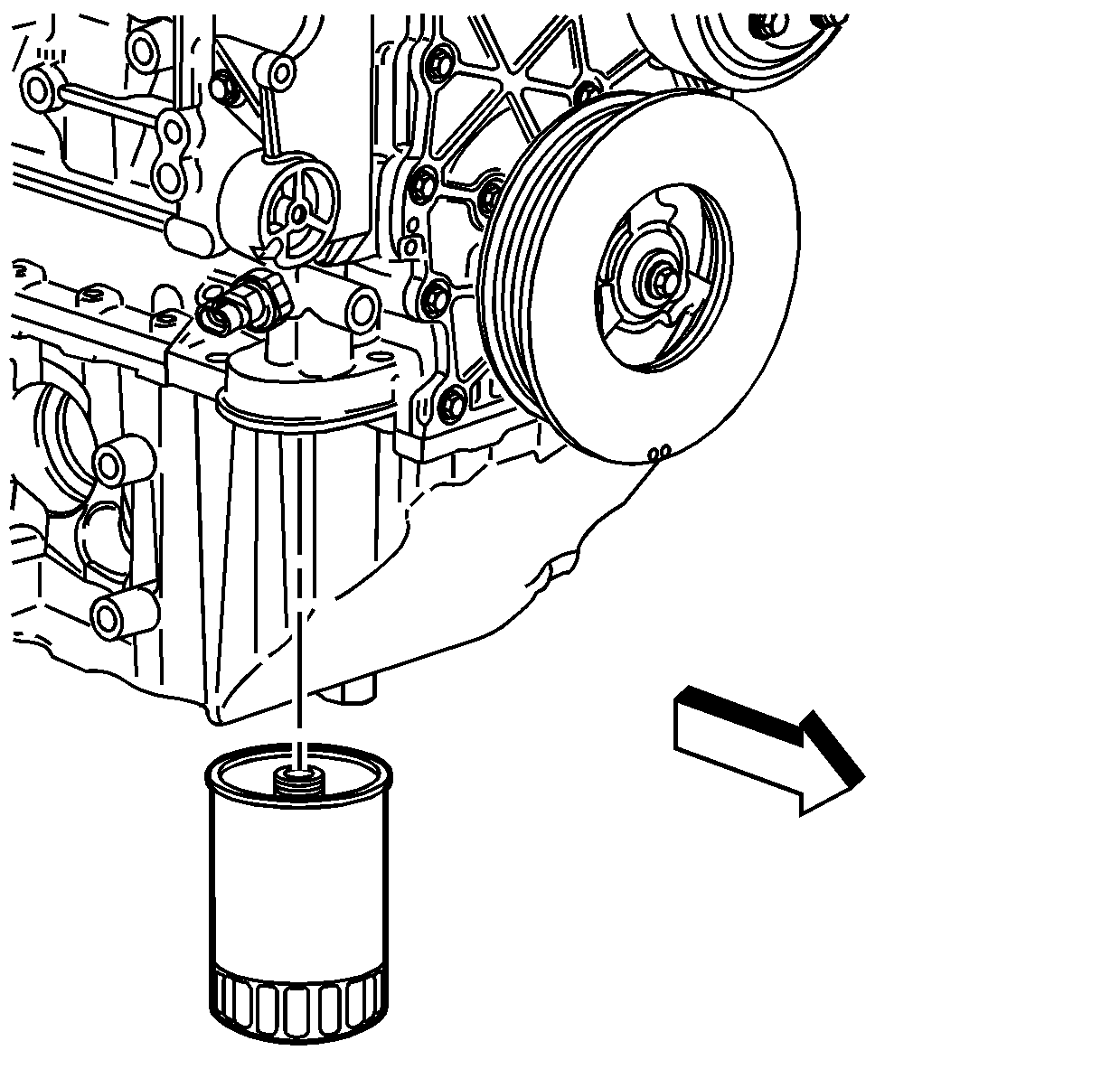For 1990-2009 cars only
Removal Procedure
- Remove the oil fill cap.
- Raise the vehicle. Refer to Lifting and Jacking the Vehicle .
- Remove the oil pan drain plug and drain the oil into a suitable container.
- Remove the oil filter using a suitable wrench.
- Inspect the old oil filter to ensure the filter seal is not left on the engine block.

Installation Procedure
- Wipe the excess oil from the oil filter housing.
- Lubricate the oil filter seal with clean engine oil.
- Install the new oil filter.
- Install the oil pan drain plug.
- Lower the vehicle.
- Fill the crankcase with the proper quantity of engine oil. Refer to Approximate Fluid Capacities and Fluid and Lubricant Recommendations .
- Remove the oil level indicator.
- Wipe the indicator with a clean cloth.
- Install the oil level indicator.
- Remove the oil level indicator and check the oil level.
- Add oil if necessary.
- Check for any oil leaks.

Notice: Use the correct fastener in the correct location. Replacement fasteners must be the correct part number for that application. Fasteners requiring replacement or fasteners requiring the use of thread locking compound or sealant are identified in the service procedure. Do not use paints, lubricants, or corrosion inhibitors on fasteners or fastener joint surfaces unless specified. These coatings affect fastener torque and joint clamping force and may damage the fastener. Use the correct tightening sequence and specifications when installing fasteners in order to avoid damage to parts and systems.
Tighten
Tighten the oil filter to 17 N·m (22 lb ft) plus 150 degrees.
Tighten
Tighten the oil pan drain plug to 26 N·m (19 lb ft).
